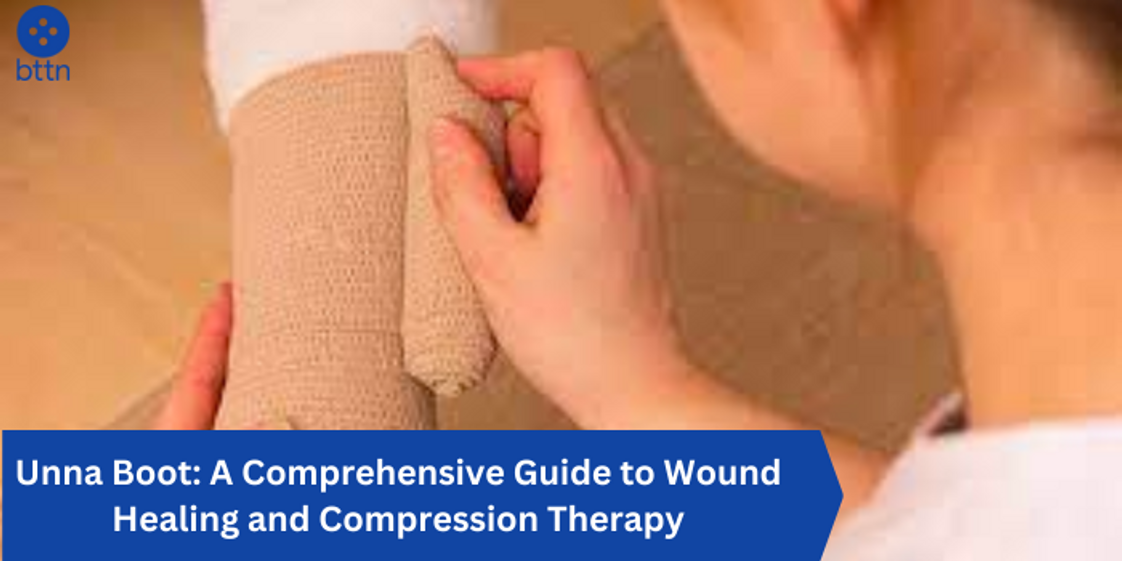
Unna Boot: A Comprehensive Guide to Wound Healing and Compression Therapy
Posted by Pankaj Dhiman on Nov 23rd 2023
Unna Boot: Healing Leg Ulcers with Compression Therapy
What is an Unna Boot?
An Unna Boot, also known as an Unna bandage or paste bandage, is a type of compression dressing used to treat venous leg ulcers. It consists of a roll of non-sterile zinc oxide paste-impregnated gauze bandage that is applied to the leg in a spiral pattern from the toes to the knee. The paste hardens as it dries, providing gentle compression to the leg and promoting wound healing.
How Does Unna Boot Compression Therapy Work?
Unna Boot compression therapy works by promoting blood flow and reducing venous stasis, which is the pooling of blood in the veins of the legs. This pooling of blood can cause inflammation, ulcers, and other problems. The compression provided by the Unna Boot helps to push the blood back up to the heart, reducing inflammation and promoting healing.
What are the Benefits of Unna Boot Therapy?
Unna Boot therapy is a safe and effective treatment for venous leg ulcers. It has been shown to reduce pain, promote healing, and improve quality of life. Unna Boots are also relatively inexpensive and easy to apply at home.
Who is a Good Candidate for Unna Boot Therapy?
Unna Boot therapy is a good option for people with venous leg ulcers that are:
- Small to medium in size
- Superficial (affecting the upper layers of the skin)
- Located below the knee
- Not infected
- Not causing severe pain
How to Apply an Unna Boot
Here are the steps on how to apply an Unna Boot:
- Clean and dry the leg thoroughly.
- Apply any necessary wound dressings.
- Remove the Unna Boot from the package and unroll it.
- Starting at the toes, apply the Unna Boot to the leg in an overlapping spiral pattern, working your way up to the knee.
- Make sure the Unna Boot is snug but not too tight. You should be able to fit two fingers between the bandage and your leg.
- If necessary, secure the Unna Boot with tape.
How Often Should Unna Boots be Changed?
Unna Boots typically need to be changed every 3 to 7 days, depending on the amount of drainage from the wound. If the Unna Boot becomes wet or soiled, it should be changed immediately.
What to Do While Wearing an Unna Boot
While wearing an Unna Boot, you should:
- Avoid strenuous activity.
- Keep your leg elevated as much as possible.
- Wear loose-fitting clothing.
- Monitor the wound for signs of infection, such as redness, swelling, or pain.
What Not to Do While Wearing an Unna Boot
While wearing an Unna Boot, you should not:
- Scratch or pick at the wound.
- Soak the Unna Boot in water.
- Apply heat directly to the Unna Boot.
At-Home Tips for Unna Boot Therapy
Here are some additional tips for maximizing the benefits of Unna Boot therapy:
- Keep a clean and dry wound environment.
- Use a moisturizer to keep the skin around the wound hydrated.
- Wear compression stockings to help maintain compression after the Unna Boot is removed.
Unna Boot Complications
Unna Boot therapy is generally safe and effective, but there are some potential complications, including:
- Skin irritation
- Allergic reaction to the zinc oxide paste
- Infection
- Difficulty walking
What Happens After Unna Boot Therapy?
Once your leg ulcer has healed, you will no longer need to wear an Unna Boot. Your doctor may recommend that you continue to wear compression stockings to prevent further ulcers from developing.
Conclusion
Unna Boot therapy is a safe and effective treatment for venous leg ulcers. It is a relatively inexpensive and easy-to-apply treatment that can help to promote healing and improve quality of life. If you have a venous leg ulcer, talk to your doctor about whether Unna Boot therapy is right for you.
